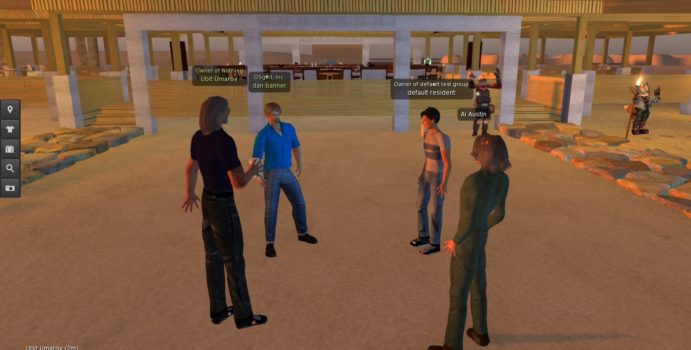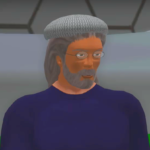
The new release of the OpenSim server software is out, OpenSimulator 0.9.1.0, also known as “Snail.”
It supports animated mesh, the new YEngine script engine, and fixes a few bugs, according to core developer Ubit Umarov. It is also the first release to have a name, not just a number.
“This is a great milestone,” said Austin Tate, director of the Artificial Intelligence Applications Institute at the University of Edinburgh. “I believe this release is very stable and has been under extensive testing.”
According to Tate, who is also known as “Ai Austin†in-world, the new release has been tested on OSgrid and several other grids, as well as the Openvue and AiLand OpenSim grids that Tate runs.
Get more details about the new release here, in the official 0.9.1.0 release notes. It is not yet included in the Diva Distro version of OpenSim.
New script engine
The “Snail” release of OpenSim also supports a new script engine, YEngine. The existing script engine, XEngine, will continue to be the default, but YEngine offers some features that some grid owners may appreciate.

According to OpenSim core developer Ubit Umarov, YEngine was developed and used by DreamNation and Avination grid, based on the xmrEngine. It is modified to work on both normal .Net and Mono environments, unlike the original.
“And it does solve several problems of XEngine, like the llSleep issues, wrong LSL parsing, and so on,” said Umarov.
The problem with using llSleep function in OpenSim scripts is that it may cause a script to freeze, requiring a reset, and is due to the way XEngine deals with running multiple scripts at once and can’t be fixed without significant re-coding of XEngine. YEngine is now the recommended solution, and several users have already begun successfully deploying it.
Viewer object cache, Animesh, and Bakes
There are several other improvements in the new release.
For example, OpenSim has never previously made use of the fact that viewers can save objects in a cache, said Umarov.
“This should speed up rezzing when returning to a region,” he said.
 Animesh is another feature that comes from Second Life. Now, in addition to avatars being able to use rigged mesh and animations, so can independent objects.
“It is new on OpenSim,” said Umarov. “The main thing is that some mesh objects that have avatar skeleton can now play avatar animations.”
Currently, you can do something similar with NPCs, which are basically bots that look like avatars.
The NPCs are a more complete alternative, he said. But the benefits of animesh objects is that they can be attached to avatars.
So, for example, someone could have an animated devil on one shoulder, and an animated angel on another.
According to Umarov, current viewers can support up to two attached animated mesh objects.
The final featured inspired by Second Life is the Bakes on Mesh feature.
This is where several texture layers are “baked” together in order to save processing time and improve appearance.
But now that the underlying technology is in place, users will still have to wait before they can actually see it working.
“We currently have no viewers that officially and safely support it,” said Umarov.

Austin Tate has recently written about bakes on mesh in OpenSim on his blog.
“It’s a way to apply classic avatar skins, tattoo and clothing layer items to mesh bodies without using appliers or needing onion skin extra mesh layers for each body,” he told Hypergrid Business.
The bakes on mesh technology will make mesh bodies more efficient, but it’s not just about speeding things up, he added.
“I think it’s fair to say that the use cases for bakes on mesh are still developing, but I am very positive about its potential,” he said. “With the arrival of the open-source
freely available Ruth 2.0 and Roth 2.0 mesh avatars this is potentially a game-changer.”
For example, he said, mesh on bakes allow classic avatar skins, tattoos, and basic clothing items to be worn directly by mesh avatars — without needing a special “applier” script to be provided by the mesh body vendor.
Unfortunately, the feature can crash grids running old versions of OpenSim. Virtual world viewers need to check the grid version before allowing the feature to be used.
“We are stuck at the moment waiting for a Firestorm developer to add the protective code directly into the viewer,” he said. “So, for the moment, the OpenSim server code is ahead of the viewer development needed to support the bakes on mesh feature in OpenSim.”
There are experimental viewers with bakes on mesh support, but they’re risky to older grids and so aren’t being widely distributed yet, he added.
- OSgrid back online after extended maintenance - April 16, 2025
- Analysts predict drop in headset sales this year - March 25, 2025
- OSgrid enters immediate long-term maintenance - March 5, 2025
